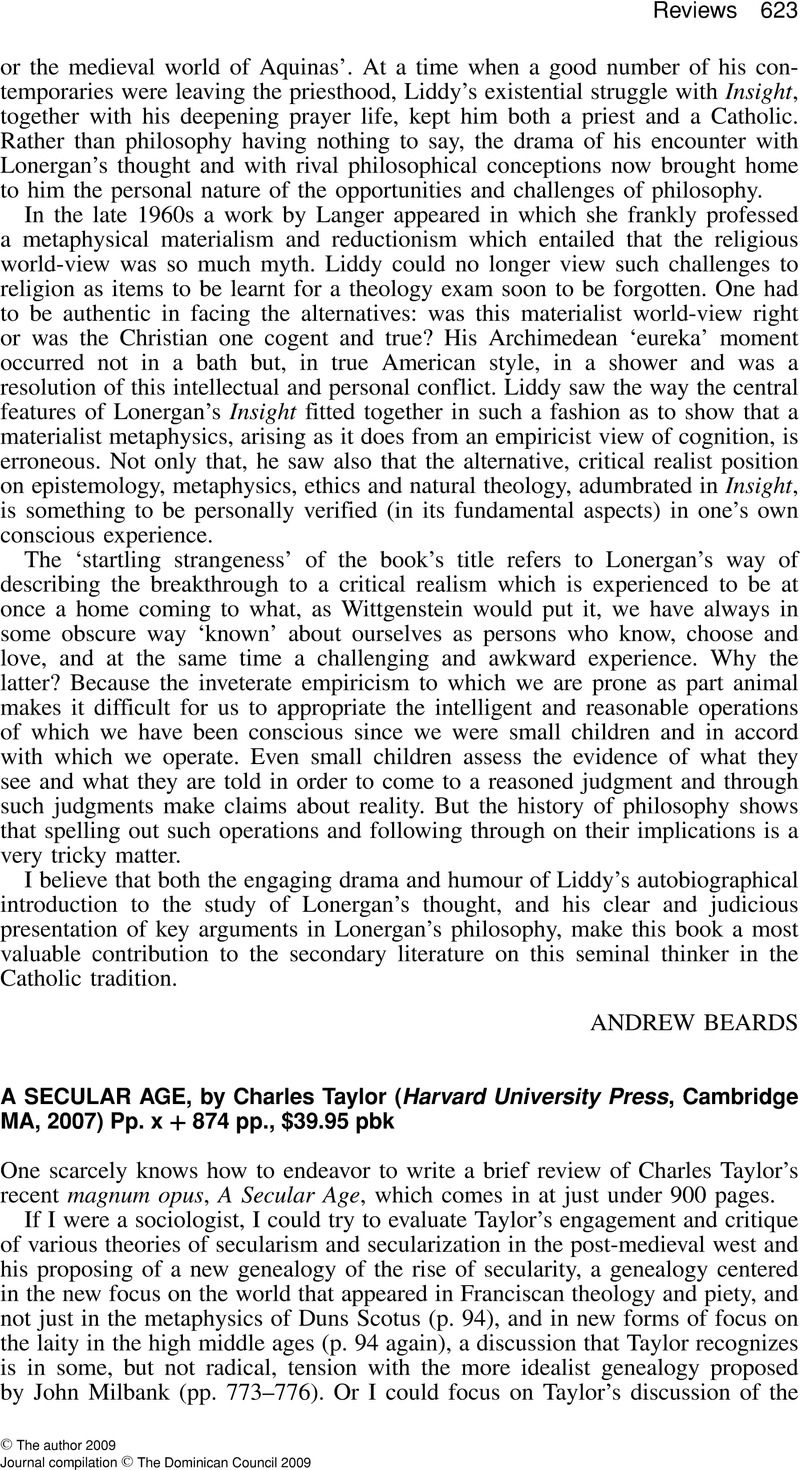No CrossRef data available.
Article contents
A Secular Age, by Charles Taylor (Harvard University Press, Cambridge MA, 2007) Pp. x + 874 pp., $39.95 pbk
Review products
A Secular Age, by Charles Taylor (Harvard University Press, Cambridge MA, 2007) Pp. x + 874 pp., $39.95 pbk
Published online by Cambridge University Press: 01 January 2024
Abstract
An abstract is not available for this content so a preview has been provided. Please use the Get access link above for information on how to access this content.

Information
- Type
- Reviews
- Information
- Copyright
- © The author 2009. Journal compilation © The Dominican Council 2009

